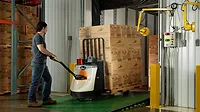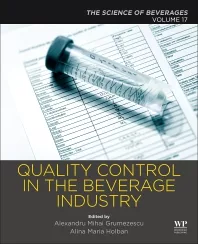Operations
Beverage operations must utilize training, market trends to their advantage
Limited applicant pool, increased training reduce employee recruitment and retention

Image courtesy of Getty Images
In an episode of NBC’s sitcom “Parks and Recreation,” Ron Swanson, director of the parks and recreation department, searches for an assistant. After sifting through applicants, Ron decides to appoint former parks intern April Ludgate to be his assistant, as she knows that Ron wants to interact with the public as little as possible and not go to meetings.
Although Ron’s work ethic would be questionable in real life, April knew she had the right qualities to work well with Ron. Unfortunately, employee recruitment in real life isn’t always as simple.
Bill Rohr, project manager at the Kelly Anderson Group in Neosho, MO, says that the market for employee recruitment and retention for warehouse and distribution operations is complicated, but crucial.
“Recruiting and keeping skilled workers in warehouses and distribution centers is extremely important today,” he explains. “When we look at the current market trends, important elements affecting employee retention, and how new laws for commercial driver’s licenses (CDL) might affect this, it’s obvious that careful and strategic planning is vital for success.”
Legislation to expand the pool of eligible candidates for CDL drivers is significant for the beverage distribution industry, Rohr notes.
“By relaxing certain requirements, there is an opportunity to broaden the candidate pool, which could be a significant step toward addressing the driver shortage,” he explains. “This approach could also pave the way for a wider range of applicants, thereby enhancing the workforce with varied perspectives and experiences.
However, Rohr notes that it is important to add that an expanded candidate pool raises concerns about maintaining safety standards — an aspect he says requires careful consideration to “ensure the continued well-being and efficiency of the workforce.”
“Employee recruitment and retention in the beverage industry’s warehouse and distribution operations is complex and evolving,” he shares. “By understanding the current market trends, acknowledging the key factors at play and adapting to legislative changes, businesses can handle these challenges effectively.”
Rohr goes on to describe that the beverage industry, like many others right now, is trying to navigate a complex labor market. He notes that recent articles from beverage distribution centers highlight both challenges and opportunities.
“With an increasing demand for timely and efficient delivery services, the pressure on warehouse operations to maintain a competent workforce is intense,” Rohr shares.
He also notes that fluctuating demand is “a common challenge” in many industries and is particularly evident in the shifting seasonal demands that call for flexible staffing solutions.
“Alongside this, there’s a noticeable skill gap, especially in technologically advanced warehouse environments, where the specific skills required are often difficult to find,” Rohr says. “To address these challenges, companies are increasingly offering competitive salaries to attract skilled workers.”
However, Rohr states that the strategy alone is proving to be insufficient for long-term retention, which indicates the need for additional measures to maintain a workforce that is stable and capable.
“Employee recruitment and retention in the beverage industry’s warehouse and distribution operations is complex and evolving.”
– Bill Rohr, project manager at Kelly Anderson Group
Many factors are contributing to the way warehouse and distribution operations recruit and retain their employees.
“For instance, proficiency in new technologies is increasingly becoming a requirement, which narrows the candidate pool significantly,” Rohr explains. “Plus, the importance of a positive and safe working environment cannot be overstated when it comes to employee satisfaction. Providing clear career paths and development opportunities has become essential for retaining employees.”
He says that, collectively, such elements “bring to light” the shifting nature of workplace expectations, as well as the need for companies to adapt to these changing dynamics.
As for how warehouse and distribution operations can improve retention and recruitment levels, Rohr shares that it requires a versatile approach.
“Investing in wide-ranging training programs is a key strategy to bridge the existing skill gap, making sure employees are well-equipped to handle their roles effectively,” he explains. “Alongside this, promoting a philosophy of recognition is important in boosting morale and loyalty among the workforce.”
Rohr feels that adapting to the needs of the modern workforce is absolutely necessary, as factors like flexible work arrangements have become more and more important. He says that these steps are “fundamental” to create a workforce that is more engaged, skilled and satisfied.
“The future of beverage distribution operations hinges on innovative strategies prioritizing employee well-being, skill development and adaptability to any future legislative changes,” Rohr concludes.
Looking for a reprint of this article?
From high-res PDFs to custom plaques, order your copy today!









